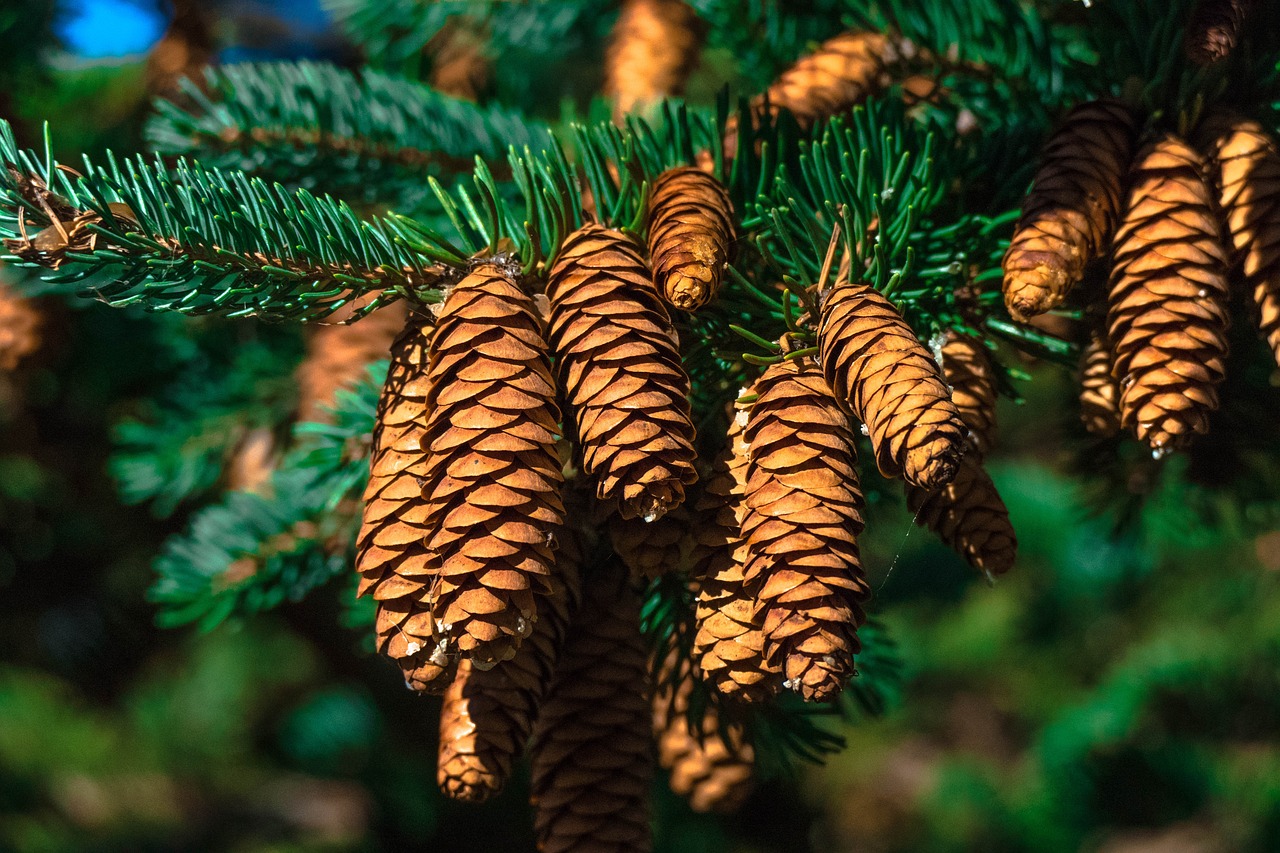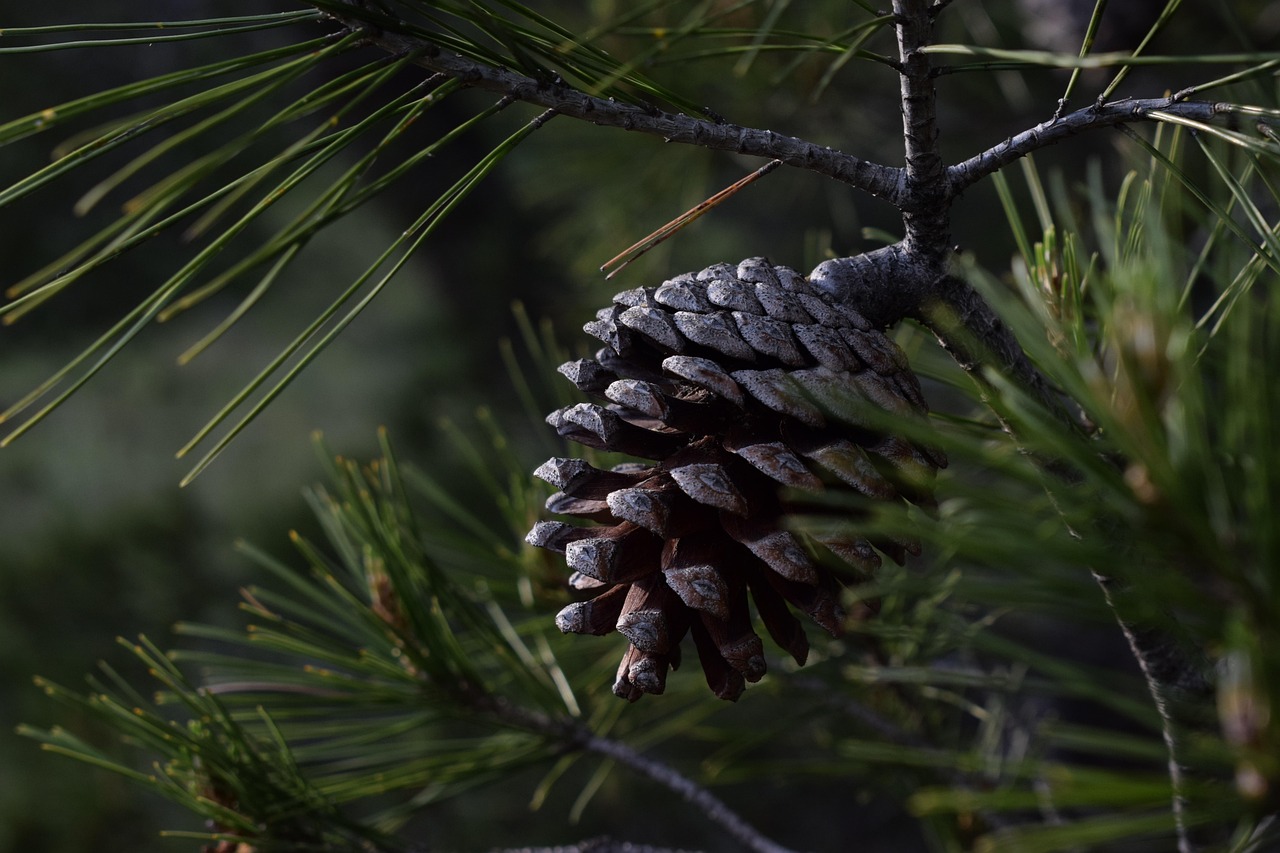The Loblolly Pine is indeed an evergreen tree. This means it retains its foliage throughout the year, providing consistent greenery in various landscapes.
Understanding the Loblolly Pine

The Loblolly Pine (Pinus taeda) is a prominent tree species found primarily in the southeastern United States. It is known for its tall stature, rapid growth, and adaptability to various soil types. This tree typically thrives in warm climates, making it a common sight in forests and plantations across regions such as North Carolina, South Carolina, Georgia, and Alabama.
Loblolly Pines are an essential part of the ecosystem. They provide habitat for numerous wildlife species and play a significant role in the timber industry. The wood from these trees is highly valued for its strength and versatility, being used in construction, furniture, and paper production.
Characteristics of the Loblolly Pine
One of the most distinguishing features of the Loblolly Pine is its needle-like leaves. These needles grow in clusters of three and can reach lengths of up to 10 inches. The tree’s bark is thick and dark, often resembling a scaly texture that helps protect it from pests and diseases.
Here are some key characteristics of the Loblolly Pine:
| Characteristic | Description |
|---|---|
| Height | Typically reaches 60 to 100 feet |
| Diameter | Can grow up to 3 feet in diameter |
| Lifespan | Generally lives for 100 to 200 years |
| Growth Rate | Fast-growing species |
| Habitat | Prefers well-drained sandy soils |
Ecological Importance
The Loblolly Pine plays a vital role in its native ecosystems. Its dense forests provide shelter and food for various wildlife species, including birds, mammals, and insects. The tree’s foliage offers nesting materials and protective cover. Additionally, the Loblolly Pine contributes to soil health by improving nutrient cycling and preventing erosion.
This tree is also significant for its role in carbon sequestration. By absorbing carbon dioxide from the atmosphere, Loblolly Pines help mitigate climate change effects. Their rapid growth allows them to sequester carbon at a higher rate than many other tree species.
Uses of Loblolly Pine
The economic value of the Loblolly Pine cannot be overstated. It is one of the most harvested timber species in the United States. Its wood is used for various applications, including:
- Construction lumber
- Plywood
- Paper products
- Furniture manufacturing
- Wood chips for biomass energy
The versatility of Loblolly Pine wood makes it a popular choice among builders and manufacturers. Its strength combined with a relatively low cost contributes to its wide range of uses.
Growth Conditions for Loblolly Pine
Loblolly Pines thrive in specific growth conditions that allow them to reach their full potential. Understanding these conditions is crucial for successful cultivation and management. They prefer well-drained, sandy soils but can also adapt to clay and loamy soils. Here are some of the key factors that influence the growth of Loblolly Pines:
- Soil Type: Loblolly Pines grow best in acidic soils with a pH between 4.5 and 6.0. They are often found in sandy or loamy soils that provide good drainage.
- Moisture: These trees require moderate moisture levels. While they can tolerate some drought, consistent watering during dry spells is beneficial for their growth.
- Sunlight: Full sunlight is essential for optimal growth. Loblolly Pines thrive in open areas where they can receive at least six to eight hours of direct sunlight daily.
- Temperature: Being native to the southeastern United States, they prefer warmer temperatures. Loblolly Pines grow best in USDA hardiness zones 7 through 10.
Planting and Propagation
When it comes to planting Loblolly Pines, proper techniques can greatly influence their success. Here are some steps and considerations for planting:
- Selecting the Right Site: Choose a location with full sun and suitable soil conditions.
- Preparing the Soil: Clear the area of debris and weeds. Test the soil pH and amend it if necessary to ensure it is acidic enough for Loblolly Pines.
- Planting Seedlings: Plant seedlings in early spring or fall. Space them 8 to 10 feet apart to allow for their wide canopy as they mature.
- Watering: Water newly planted seedlings thoroughly. Continue to provide water during the first growing season, especially during dry periods.
- Mulching: Apply mulch around the base of the seedlings to conserve moisture and suppress weeds.
Pests and Diseases

Loblolly Pines, like many tree species, can be susceptible to various pests and diseases. Being aware of these threats can help in effective management and prevention. Some common issues include:
- Pine Bark Beetles: These insects bore into the bark, damaging the tree’s vascular system. Infestations can lead to tree decline or death.
- Needle Blight: This fungal disease causes needles to turn yellow and drop prematurely, affecting the overall health of the tree.
- Root Rot: Caused by excessive moisture, root rot can severely impact the tree’s ability to absorb nutrients and water.
- Galls: Various insects can cause galls on pine needles or branches, leading to deformities and stress on the tree.
Monitoring trees regularly for signs of pests or diseases is essential. Early detection allows for timely intervention, which can include treatments or removal of affected trees.
Management Practices
Managing Loblolly Pines involves implementing practices that promote healthy growth while minimizing risks from pests and diseases. Some effective management strategies include:
- Thinning: Thinning overcrowded stands helps improve air circulation and reduces competition for resources. This practice can also enhance growth rates of remaining trees.
- Pest Control: Use integrated pest management (IPM) strategies that combine biological, mechanical, and chemical controls to manage pest populations effectively.
- Regular Inspections: Conduct regular inspections of trees to identify any signs of stress or infestations early on.
- Soil Management: Regularly test soil health and amend as necessary to ensure optimal growing conditions.
By following these management practices, landowners can ensure that their Loblolly Pines remain healthy and productive for many years. Proper care not only benefits individual trees but also contributes positively to the surrounding ecosystem.

Environmental Benefits of Loblolly Pine
The Loblolly Pine is not only valuable for its wood but also for its numerous environmental benefits. Its presence in forests contributes significantly to ecological health. These benefits extend beyond the trees themselves, positively impacting the surrounding environment in various ways.
Carbon Sequestration
One of the most critical environmental advantages of Loblolly Pines is their ability to sequester carbon. Through the process of photosynthesis, these trees absorb carbon dioxide from the atmosphere, helping to mitigate climate change. Here are some details about carbon sequestration:
- Rapid Growth: Loblolly Pines are fast-growing, enabling them to capture and store carbon quickly compared to slower-growing species.
- Long Lifespan: With a lifespan that can reach up to 200 years, mature trees provide long-term carbon storage.
- Forest Management: Sustainable forest management practices can enhance carbon storage potential, ensuring that Loblolly Pine forests continue to absorb carbon effectively.
Soil Health Improvement
Loblolly Pines contribute to soil health in several ways. Their extensive root systems help prevent soil erosion and promote nutrient cycling. Here are some specific benefits:
- Root Structure: The roots stabilize the soil, reducing erosion during heavy rainfall or wind events. This stabilization is essential in maintaining soil integrity.
- Nutrient Cycling: As Loblolly Pines shed their needles, they add organic matter to the soil. This process enriches soil nutrients and enhances fertility for other plants.
- Microbial Activity: The organic matter from fallen needles fosters a diverse range of soil microbes, which play a crucial role in nutrient breakdown and availability.
Wildlife Habitat
Loblolly Pine forests provide critical habitat for a wide variety of wildlife species. The structure and composition of these forests offer food and shelter to many animals. Some notable aspects include:
Nesting Sites
The dense foliage of Loblolly Pines creates ideal nesting sites for many bird species. Here are some birds commonly found in Loblolly Pine habitats:
- Red-shouldered Hawk: These birds often nest in the upper canopy, where they can spot prey from above.
- Eastern Bluebird: They prefer open areas near pine forests for nesting, benefiting from the insects abundant in these ecosystems.
- Pileated Woodpecker: Known for their distinctive calls, they make their homes in large trees with decaying wood.
Food Sources
Loblolly Pines serve as a food source for various wildlife, including:
- Squirrels: These small mammals feed on pine cones, which are rich in nutrients.
- Deer: Young pine shoots and foliage are a preferred food source for deer, especially in winter months.
- Insects: Many species of insects thrive in Loblolly Pine forests, providing food for birds and other wildlife.
Cultural and Economic Significance
The cultural and economic significance of Loblolly Pines extends beyond their ecological benefits. They have played a vital role in the development of communities, particularly in the southeastern United States, where they are extensively cultivated.
Cultural Importance
Loblolly Pines are deeply embedded in the culture and history of southern communities. They have been linked to local traditions and practices, such as:
- Pine Straw Mulching: The collecting and selling of pine straw is a common practice in southern states, providing income for many families.
- Timber Heritage: The timber industry has shaped local economies and identities, with Loblolly Pines being at the forefront.
Economic Contributions
The economic contributions of Loblolly Pines are substantial. They support various industries and provide jobs in several sectors, including:
- Timber Industry: Loblolly Pines are a primary source of timber, contributing significantly to both local and national economies.
- Pulp and Paper Production: The wood is widely used in producing paper products, making it an integral part of this industry.
- Tourism: Pine forests attract tourists for recreational activities like hiking, birdwatching, and camping, bolstering local economies.
Conservation and Sustainability of Loblolly Pine

As the importance of Loblolly Pines continues to grow, so does the need for sustainable practices in managing these trees. Conservation efforts focus on maintaining healthy forests while balancing economic needs. Implementing sustainable forestry practices ensures that Loblolly Pine populations remain resilient and environmentally beneficial.
Sustainable Forestry Practices
Several sustainable forestry practices can help maintain the health of Loblolly Pine ecosystems. These practices include:
- Selective Harvesting: Instead of clear-cutting, selective harvesting allows for the removal of only certain trees. This method helps maintain forest structure and biodiversity.
- Reforestation: Replanting Loblolly Pines after harvesting is crucial for ensuring forest regeneration. This practice maintains the ecological balance and continues the cycle of carbon sequestration.
- Forest Certification: Participating in certification programs, such as the Forest Stewardship Council (FSC), ensures that forestry operations meet high environmental and social standards.
- Community Engagement: Involving local communities in forest management fosters a sense of stewardship and encourages sustainable practices at the grassroots level.
Climate Resilience
As climate change continues to impact ecosystems worldwide, the resilience of Loblolly Pines becomes increasingly important. These trees are adaptable, but specific measures can enhance their ability to cope with changing environmental conditions:
- Diversity in Planting: Incorporating a variety of species alongside Loblolly Pines can create a more resilient ecosystem that can better withstand pests, diseases, and climatic changes.
- Monitoring Ecosystems: Regular monitoring of forest health helps identify potential threats early, allowing for timely interventions to protect Loblolly Pine populations.
- Water Management: Efficient water management strategies are crucial for ensuring that Loblolly Pines receive adequate moisture during drought conditions, which may become more common due to climate change.
Final Thoughts
The Loblolly Pine is a remarkable species with significant ecological, economic, and cultural value. As an evergreen tree, it provides year-round greenery and plays a vital role in carbon sequestration and soil health. Its adaptability to different environments makes it a popular choice for both natural forests and managed plantations.
The benefits of Loblolly Pines extend beyond their timber value. They serve as essential habitats for diverse wildlife and contribute to local economies through various industries. Sustainable management and conservation practices are crucial for ensuring that this valuable resource continues to thrive for future generations.
As awareness grows regarding environmental issues, the role of Loblolly Pines in combating climate change and supporting biodiversity becomes increasingly important. By focusing on sustainable practices, landowners and communities can ensure the longevity of Loblolly Pine forests while reaping their many benefits. The future of Loblolly Pines is not just about timber; it’s about preserving our natural heritage and promoting a healthier planet.
